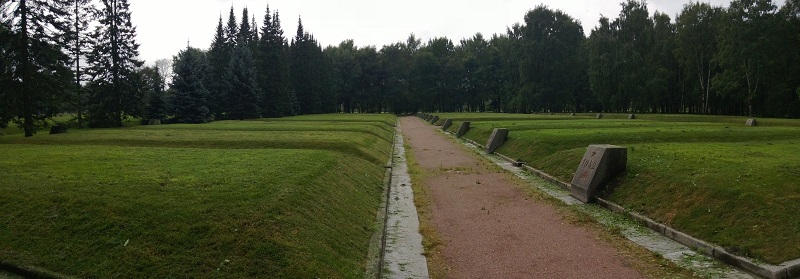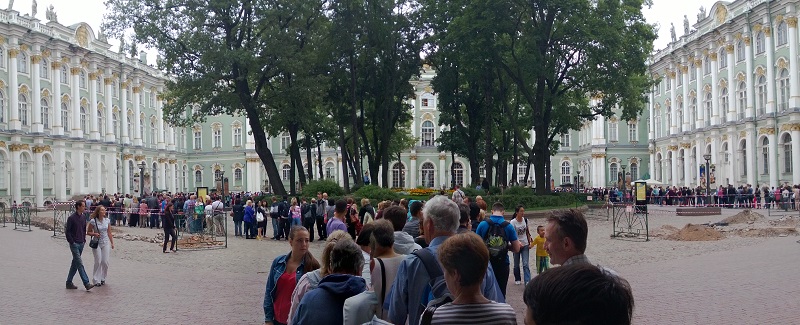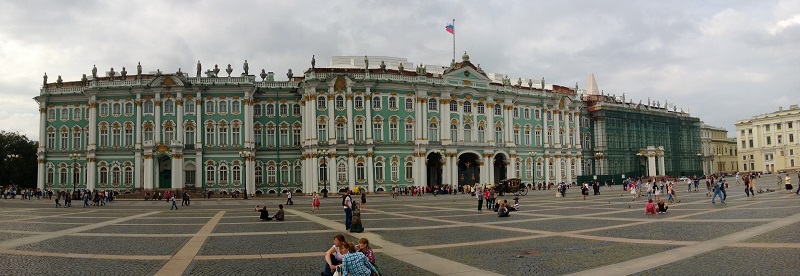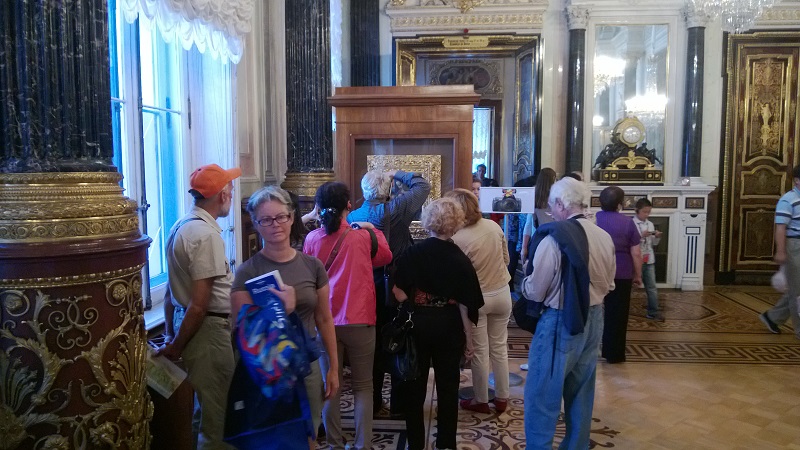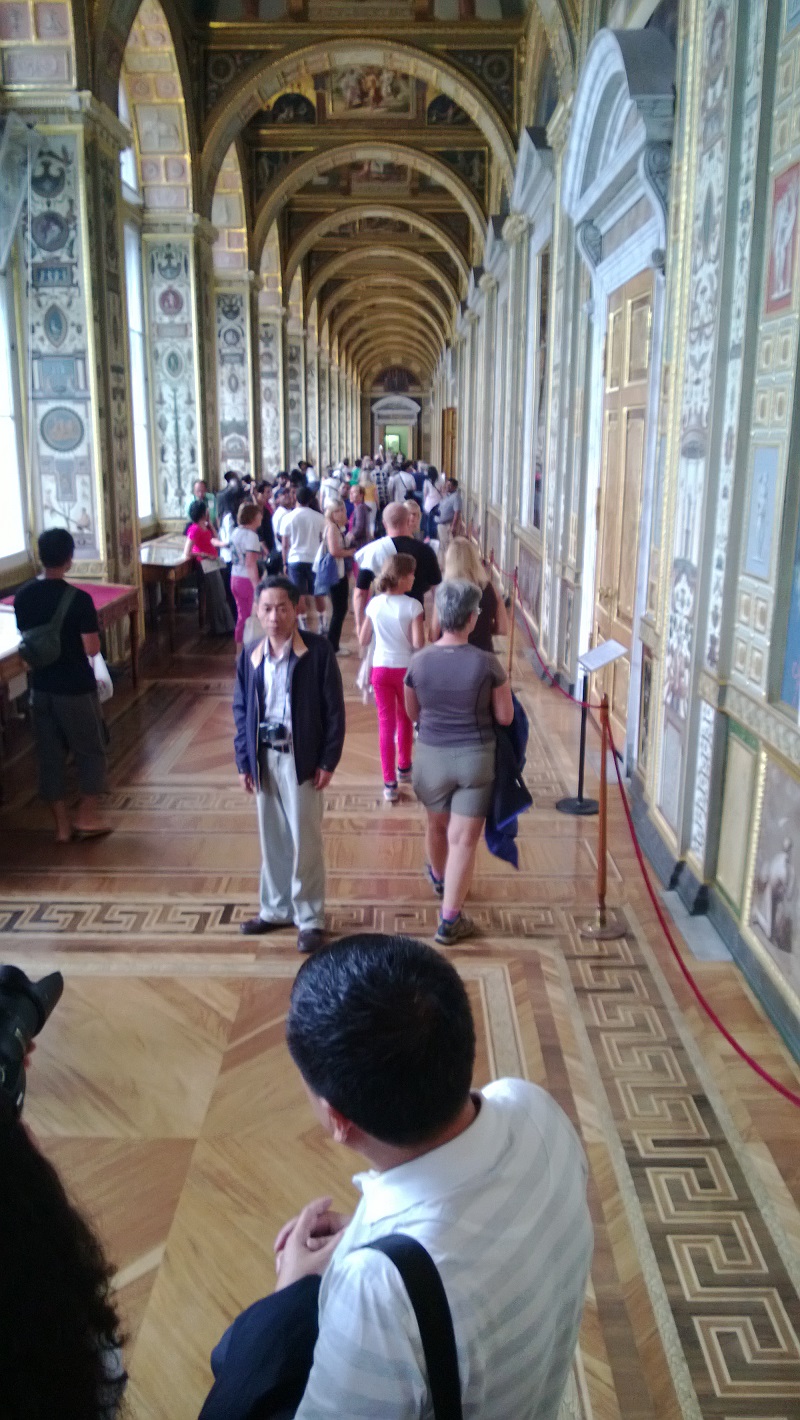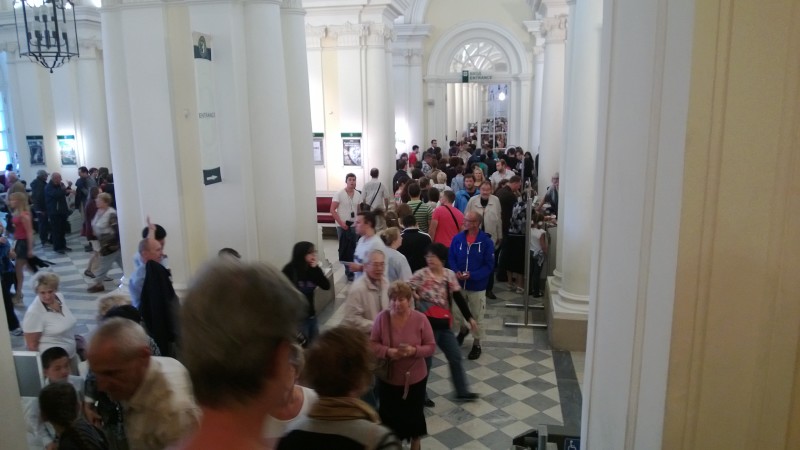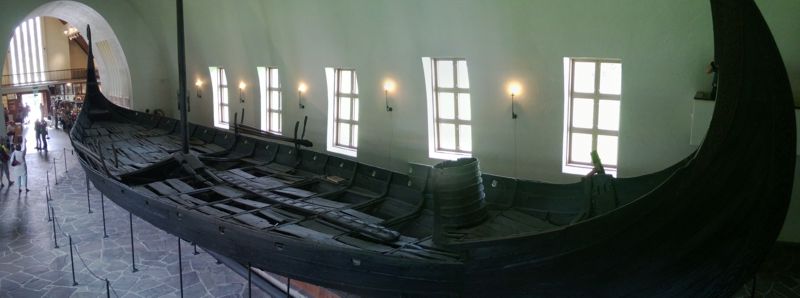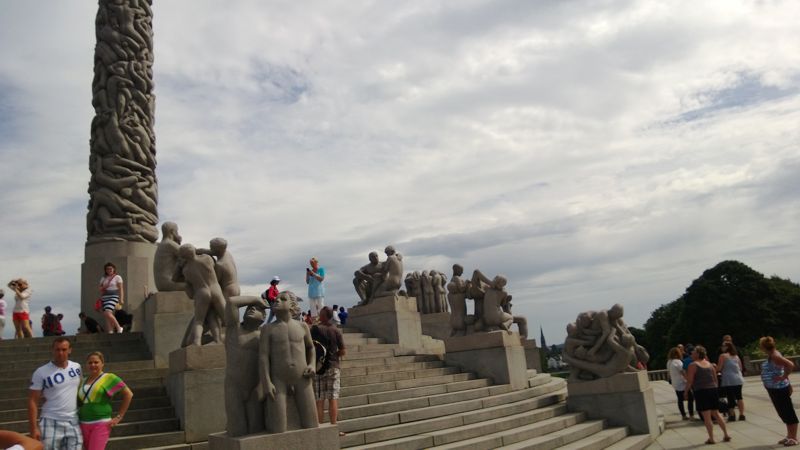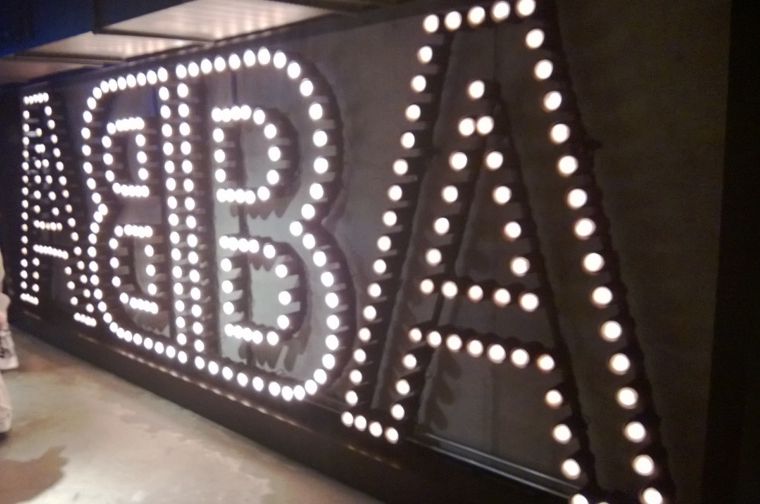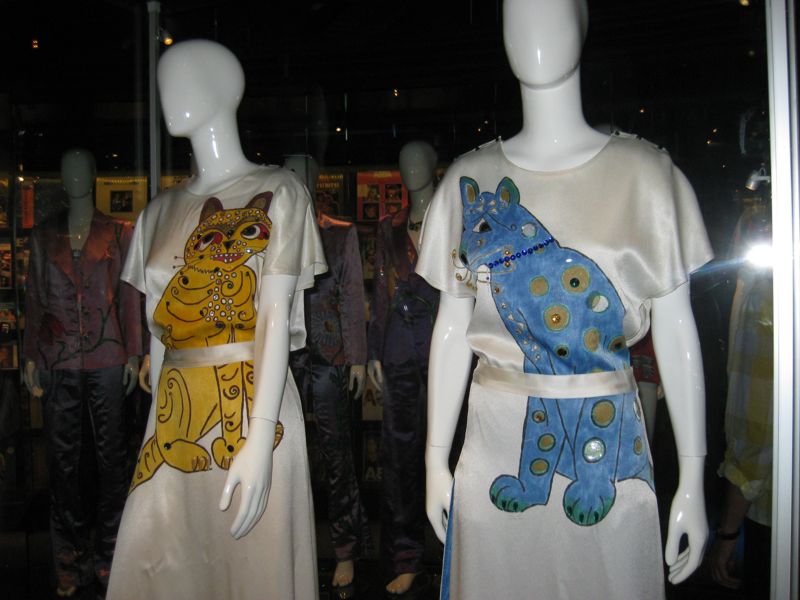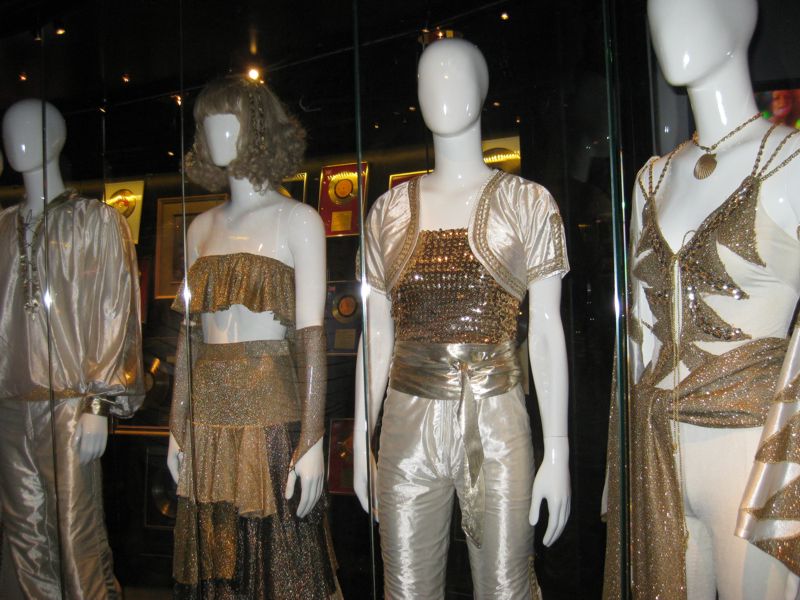The Piskaryovskoye Memorial Cemetery is a monument to the Leningrad siege and contains the graves of 500,000 people.
We found a post on trip advisor that gave directions to the cemetery. So we took the metro (our first time, up to then we had used buses) and headed north. We emerged from the Metro to find ourselves in suburban Saint Petersburg. We then found the right minibus, paid our money and hoped that the driver would drop us off to the right place. Due to some mistranslation of Cyrillic he dropped us off past the memorial and we had to walk back about 1 km,
There were not many people at the Piskaryovskoye Memorial Cemetery, It is surprising as it is the most important event in Saint Petersburg (Leningrad) history. The siege of Leningrad by the German Army and the Finns started in January 1941 and lasted 872 days. Approximately 1.5 million inhabitants died from starvation, and the bombardment by the German Army. 500,000 of those who died are buried in mass graves at Piskaryovskoye Memorial Cemetery. Compare this with UK and USA deaths in World War 2 which totalled 800,000.
It is a very moving place.
How to get there:
We got instructions from Trip Advisor, these are the slightly amended instructions-
Take the Red Line (#1) subway to the Akademicheskaya stop on the north side of town (28 Rubles) . Exiting the metro go straight across the plaza, cross the side street (to the right that runs between the metro plaza and the shopping centre) and look for an appropriate bus. Take either a private bus K172 (Mini bus 35 Rubles) or 178 (25 Rubles) to the memorial. Just pay the driver the Mini-bus (K172) the 35 rubles , On the way back, there is bus stop directly in front of the memorial. You will be let off across the main street from the subway. If there is no conductor on the 178 bus pay the 25 rubles to the driver (just put the money on a tray through the little window near the driver) when you LEAVE the bus.
the name of the Piskaryovskoye Memorial Cemetery in Cyrillic. If you can copy this to your phone you can show it to the bus driver.

the route the K172/ 178 bus takes from the Metro to the Cemetery, the bus continues on past the cemetery.


